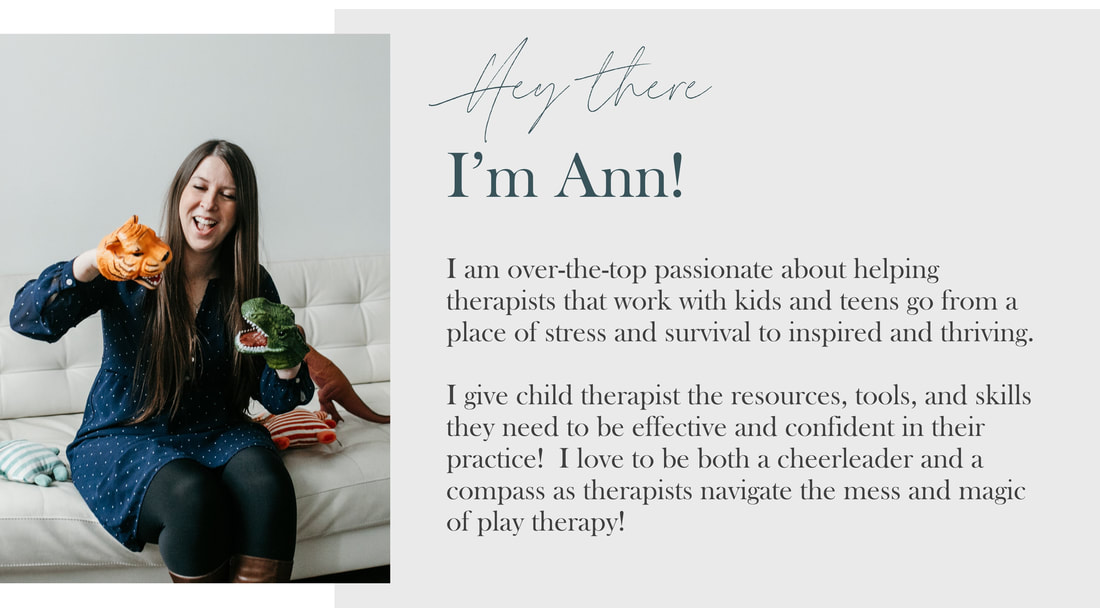|
Parents often come to therapy with an agenda.
Of course they do! Their child is struggling in some way and they just want things to get back to normal, where their child is happy, regulated and thriving. And this change? Well… it needed to happen, like yesterday! By the time kids and families present in your therapy office it is likely the pain, struggle, and dysregulation has been going on for a loooong time.
So, as they sit down on your couch and unfold the story of how things got to this place, they are usually looking for a roadmap to healing. (If you need more support in this, check out this post about 12 factors that contribute to prognosis in therapy!)
AND some parents have expectations that in just a couple of sessions things can get back on “the right track” and the therapy process will have wrapped up. (If you need more support in this area check out how my informed consent process clarifies expectations and grab my free Informed Consent Checklist HERE!) And one of the most important factors for determining how long the therapy process will take is the willingness of the child to participate. This can be tough for therapists as we hold the process of goal development and planning how to make progress towards goals while at the same time honoring the story resistance has to tell. Check out more about reframing resistance in therapy HERE and how to understand the root of resistance in this free Mini Master Class How Did We Get Here: Identifying The Root of Resistance. As much as we know these things to be true, we can still feel the very real pressure from parents to quickly see gains and movement towards goals. AND in the spirit of providing as many tools and resources as I can to therapists who work with kids..... Here are 7 Tips for talking about resistance with parents and caregivers: Provide Psychoeducation Resistance to therapy is normal! You can let parents know that their child likely didn’t sign up for therapy on their own, didn’t get to research or pick their therapist, and may have a ton of big feelings about being there so it makes sense that coming to therapy seems hard. You can let parents know that the resistance is a child’s way of letting both you and their caregiver know that something about the therapy process doesn’t feel safe and resistance is a form of protection. Coach A Positive Therapy Narrative Discuss the therapy process and treatment modalities with the parent or caregiver so they can reinforce this with their child at home. For a therapist that engages in Child Centered Play Therapy this may sound like “You can do almost anything in Ann’s office including playing with the sand, creating art (which I know you love!), or playing with her dollhouse. I know some big things have been happening in your life right now, but your time with Ann is just for special play time!”. This might also sound like “I know you have had a lot of big feelings lately, which I understand! There have been a lot of big things going on in your life that can be confusing or mixed up. Ann’s office is a place where we can go to get the tools and support to figure things out - AND it’s also a place where we can go to play and have fun!”. You can also have the parent identify that they have things they are going to work on too, and a part of meeting with you is so they can get tips and ideas on how to support the child in a way that feels better for the child. Identify How To Increase Safety Brainstorm with the parent or caregiver if there is anything they have heard their child say that they like or don’t like about the sessions and use this feedback to make any changes that might be appropriate. This can be anything from taking a snack into session, having a parent with them for the session at the beginning, or switching parent check in to the end of the session. Reframe Goals You can work with the parent to reframe goals as working on safety and the relationship. Without a positive relationship and working alliance, the child will not feel safe enough to engage in the therapy process in ways that help get them towards their goals. Because of this - working on the relationship is the goal! Reduce Pressure Some parents may make statements to their child that hold judgement about resistance. It might sound like "you need to participate next session" or "sit up and open your eyes!". If a child is feeling a loss of control, statements like this can often increase resistance as a way to regain control. If we reduce pressure as a way to reduce resistance this is something that can significantly help children feel safe enough to engage! Some structure you may suggest to parents about therapy is that the child needs to come (see HERE about medically necessary services) BUT they can choose to do as much or little in the playroom as they feel comfortable with! Be Honest About Timeline Provide an honest assessment of how long the process may take to build rapport. For some kids this may be many sessions depending on factors that brought them into therapy and their history with therapy. Focus on hearing the parents' concerns and validating their feelings. Suggest Treatment Alternatives If appropriate you can brainstorm alternative types of therapy, settings, or support that may benefit the child. For some kids and areas of difficulty once per week therapy may not be enough support or a high enough level of care for what is presenting in the Playroom. Sometimes having an excellent list of referrals can make all the difference! And there you have it! 7 tips to support your work with parents when kids are resistant in Play Therapy! Do you need more support with resistance in the playroom? Check out my training Rolling With Resistance: Play Therapy Interventions For Your Most difficult To Engage Clients, with 25+ Play therapy activities to unlock resistance and increase engagement! Loading...
0 Comments
Leave a Reply. |
Hi, there!I'm Ann Meehan, an LPCC, Loading... Archives
July 2024
Categories
All
|
Privacy Policies | Terms of Use | Disclaimer
Contact
[email protected] | Copyright Meehan Mental Health Services 2022
Contact
[email protected] | Copyright Meehan Mental Health Services 2022







